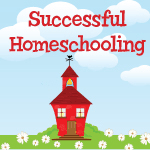
Andrew has been inhaling books, and it's been a challenge to find worthwhile, yet entertaining reading material for him.
One resource I've turned to is Honey for a Child's Heart by Gladys Hunt. The book contains tips for choosing books for children, as well as lists of recommended books for a variety of ages. Books Children Love is a similar title written by Elizabeth Laraway Wilson and Susan Schaeffer Macaulay. I also refer to book lists from popular literature based curriculum companies, like Sonlight and Five in a Row.
According to Dr. Ruth Beechick, there are 3 stages to becoming a fluent reader. Decoding is the process of learning phonics. Fluency is learning to quickly recognize words. Information moves beyond recognizing words to actually receiving value from them.
When Andrew was in the fluency stage, my goal was to choose books that made him want to read. At the Scholastic Book Fair, I found NBA Readers about his favorite basketball stars. I also used joke books, comic books, and children's magazines to draw him into reading. He told me so many jokes that one day his baby brother brought me the book and said, "Knock Knock!"
Reading is one area where I feel it's important to let the child lead. Instead of assigning reading material, I keep good books available that Andrew can read as he chooses. This relaxed style is working well for us. As a new homeschooler, I was worried that Andrew wasn't reading up to his potential. Now, I often find him choosing books that are 3 to 4 years above his grade level.
In the beginning stages of reading, it is important not to pressure children to read on grade level or discourage them from re-reading simple books they enjoy. The process of becoming a fluent reader can take weeks, months or several years depending on the child. Here are some tips for teaching homeschool reading and choosing a homeschool reading curriculum.

One resource I've turned to is Honey for a Child's Heart by Gladys Hunt. The book contains tips for choosing books for children, as well as lists of recommended books for a variety of ages. Books Children Love is a similar title written by Elizabeth Laraway Wilson and Susan Schaeffer Macaulay. I also refer to book lists from popular literature based curriculum companies, like Sonlight and Five in a Row.
According to Dr. Ruth Beechick, there are 3 stages to becoming a fluent reader. Decoding is the process of learning phonics. Fluency is learning to quickly recognize words. Information moves beyond recognizing words to actually receiving value from them.
When Andrew was in the fluency stage, my goal was to choose books that made him want to read. At the Scholastic Book Fair, I found NBA Readers about his favorite basketball stars. I also used joke books, comic books, and children's magazines to draw him into reading. He told me so many jokes that one day his baby brother brought me the book and said, "Knock Knock!"
Reading is one area where I feel it's important to let the child lead. Instead of assigning reading material, I keep good books available that Andrew can read as he chooses. This relaxed style is working well for us. As a new homeschooler, I was worried that Andrew wasn't reading up to his potential. Now, I often find him choosing books that are 3 to 4 years above his grade level.
In the beginning stages of reading, it is important not to pressure children to read on grade level or discourage them from re-reading simple books they enjoy. The process of becoming a fluent reader can take weeks, months or several years depending on the child. Here are some tips for teaching homeschool reading and choosing a homeschool reading curriculum.








No comments:
Post a Comment